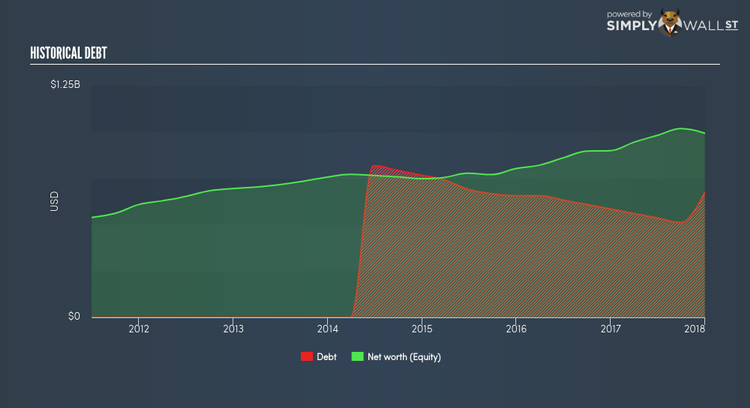Is Entegris Inc’s (NASDAQ:ENTG) Balance Sheet Strong Enough To Weather A Storm?

Small-caps and large-caps are wildly popular among investors; however, mid-cap stocks, such as Entegris Inc (NASDAQ:ENTG) with a market-capitalization of US$4.79B, rarely draw their attention. However, history shows that overlooked mid-cap companies have performed better on a risk-adjusted manner than the smaller and larger segment of the market. Let’s take a look at ENTG’s debt concentration and assess their financial liquidity to get an idea of their ability to fund strategic acquisitions and grow through cyclical pressures. Don’t forget that this is a general and concentrated examination of Amazon’s financial health, so you should conduct further analysis into ENTG here. View our latest analysis for Entegris
Does ENTG generate enough cash through operations?
Over the past year, ENTG has ramped up its debt from US$584.68M to US$674.38M – this includes both the current and long-term debt. With this rise in debt, ENTG’s cash and short-term investments stands at US$625.41M , ready to deploy into the business. Moreover, ENTG has generated cash from operations of US$293.37M during the same period of time, resulting in an operating cash to total debt ratio of 43.50%, indicating that ENTG’s debt is appropriately covered by operating cash. This ratio can also be interpreted as a measure of efficiency as an alternative to return on assets. In ENTG’s case, it is able to generate 0.44x cash from its debt capital.
Can ENTG pay its short-term liabilities?
With current liabilities at US$290.97M, it appears that the company has maintained a safe level of current assets to meet its obligations, with the current ratio last standing at 3.63x. However, a ratio greater than 3x may be considered as too high, as ENTG could be holding too much capital in a low-return investment environment.
Is ENTG’s debt level acceptable?
ENTG is a relatively highly levered company with a debt-to-equity of 67.91%. This is not unusual for mid-caps as debt tends to be a cheaper and faster source of funding for some businesses. We can check to see whether ENTG is able to meet its debt obligations by looking at the net interest coverage ratio. A company generating earnings before interest and tax (EBIT) at least three times its net interest payments is considered financially sound. In ENTG’s, case, the ratio of 8x suggests that interest is appropriately covered, which means that debtors may be willing to loan the company more money, giving ENTG ample headroom to grow its debt facilities.
Next Steps:
Although ENTG’s debt level is towards the higher end of the spectrum, its cash flow coverage seems adequate to meet obligations which means its debt is being efficiently utilised. Since there is also no concerns around ENTG’s liquidity needs, this may be its optimal capital structure for the time being. I admit this is a fairly basic analysis for ENTG’s financial health. Other important fundamentals need to be considered alongside. I recommend you continue to research Entegris to get a better picture of the mid-cap by looking at:
Future Outlook: What are well-informed industry analysts predicting for ENTG’s future growth? Take a look at our free research report of analyst consensus for ENTG’s outlook.
Valuation: What is ENTG worth today? Is the stock undervalued, even when its growth outlook is factored into its intrinsic value? The intrinsic value infographic in our free research report helps visualize whether ENTG is currently mispriced by the market.
Other High-Performing Stocks: Are there other stocks that provide better prospects with proven track records? Explore our free list of these great stocks here.
To help readers see pass the short term volatility of the financial market, we aim to bring you a long-term focused research analysis purely driven by fundamental data. Note that our analysis does not factor in the latest price sensitive company announcements.
The author is an independent contributor and at the time of publication had no position in the stocks mentioned.

